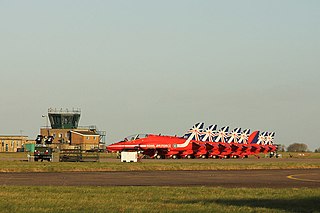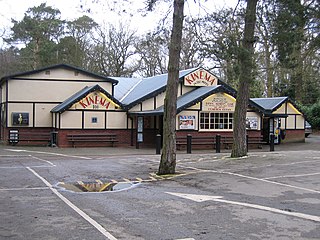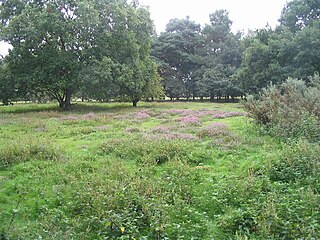
Operation Chastise, commonly known as the Dambusters Raid, was an attack on German dams carried out on the night of 16/17 May 1943 by 617 Squadron RAF Bomber Command, later called the Dam Busters, using special "bouncing bombs" developed by Barnes Wallis. The Möhne and Edersee dams were breached, causing catastrophic flooding of the Ruhr valley and of villages in the Eder valley; the Sorpe Dam sustained only minor damage. Two hydroelectric power stations were destroyed and several more damaged. Factories and mines were also damaged and destroyed. An estimated 1,600 civilians – about 600 Germans and 1,000 enslaved labourers, mainly Soviet – were killed by the flooding. Despite rapid repairs by the Germans, production did not return to normal until September. The RAF lost 56 aircrew, with 53 dead and 3 captured, amid losses of 8 aircraft.

Royal Air Force Scampton or RAF Scampton is a former Royal Air Force station located adjacent to the A15 road near to the village of Scampton, Lincolnshire, and 6 miles (9.7 km) north-west of the city of Lincoln, England.

A bouncing bomb is a bomb designed to bounce to a target across water in a calculated manner to avoid obstacles such as torpedo nets, and to allow both the bomb's speed on arrival at the target and the timing of its detonation to be predetermined, in a similar fashion to a regular naval depth charge. The inventor of the first such bomb was the British engineer Barnes Wallis, whose "Upkeep" bouncing bomb was used in the RAF's Operation Chastise of May 1943 to bounce into German dams and explode underwater, with an effect similar to the underground detonation of the later Grand Slam and Tallboy earthquake bombs, both of which he also invented.

Number 617 Squadron is a Royal Air Force aircraft squadron, originally based at RAF Scampton in Lincolnshire and currently based at RAF Marham in Norfolk. It is commonly known as "The Dambusters", for its actions during Operation Chastise against German dams during the Second World War. In the early 21st century it operated the Panavia Tornado GR4 in the ground attack and reconnaissance role until being disbanded on 28 March 2014. The Dambusters reformed on 18 April 2018, and was equipped at RAF Marham in June 2018 with the Lockheed Martin F-35B Lightning, becoming the first squadron to be based in the UK with this advanced STOVL type. The unit is composed of both RAF and Royal Navy personnel, and operates from the Royal Navy's Queen Elizabeth-class aircraft carriers.

Royal Air Force Coningsby or RAF Coningsby, is a Royal Air Force (RAF) station located 13.7 kilometres (8.5 mi) south-west of Horncastle, and 15.8 kilometres (9.8 mi) north-west of Boston, in the East Lindsey district of Lincolnshire, England. It is a Main Operating Base of the RAF and home to three front-line Eurofighter Typhoon FGR4 units, No. 3 Squadron, No. 11 Squadron and No. 12 Squadron. In support of front-line units, No. 29 Squadron is the Typhoon Operational Conversion Unit and No. 41 Squadron is the Typhoon Test and Evaluation Squadron. Coningsby is also the home of the Battle of Britain Memorial Flight (BBMF) which operates a variety of historic RAF aircraft.

Tallboy or Bomb, Medium Capacity, 12,000 lb was an earthquake bomb developed by the British aeronautical engineer Barnes Wallis and used by the Royal Air Force (RAF) during the Second World War.

The Bomb, Medium Capacity, 22,000 lb was a 22,000 lb (10,000 kg) earthquake bomb used by RAF Bomber Command against German targets towards the end of the Second World War. The bomb was originally called Tallboy Large until the term Tallboy got into the press and the code name was replaced by "Grand Slam". The bomb was similar to a large version of the Tallboy bomb but a new design and closer to the size that its inventor, Barnes Wallis, had envisaged when he developed the idea of an earthquake bomb. It was the largest and most powerful conventional aerial bomb used by either side during the war.

No. 5 Group RAF was a Royal Air Force bomber group of the Second World War, led during the latter part by AVM Sir Ralph Cochrane.

Thorpe Camp, officially known as the Thorpe Camp Visitor Centre, is the former Royal Air Force barracks for RAF Woodhall Spa. It is 2.5 miles (4.0 km) southeast of the site of RAF Woodhall Spa, in the civil parish of Tattershall Thorpe. Built in 1940 during the Second World War, the site included Officer, Sergeant and Airman messes, a NAAFI building, ration store, latrines and ablution blocks. The site closed in the 1960s.

The Lincolnshire Aviation Heritage Centre is an aviation museum in East Kirkby, Lincolnshire, England. It was opened to the public in 1988 by Lincolnshire farmers Fred and Harold Panton, as a memorial to their older brother, Christopher Whitton Panton, who was killed on operations during the Second World War.

Sir John Blundell Maple, 1st Baronet was an English business magnate who owned the furniture maker Maple & Co.

Woodhall Spa is a former spa town and civil parish in the East Lindsey district of Lincolnshire, England, on the southern edge of the Lincolnshire Wolds, 6 miles (10 km) south-west of Horncastle, 23 miles (37 km) west of Skegness, 15 miles (24 km) east-south-east of Lincoln and 17 miles (27 km) north-west of Boston. It is noted for its mineral springs, historic cinema and its Second World War association with the RAF 617 Squadron, commonly referred to as 'The Dambusters'.

Royal Air Force East Kirkby or more simply RAF East Kirkby is a former Royal Air Force station near the village of East Kirkby, south of Horncastle in Lincolnshire, just off the A155. The airfield is now home to the Lincolnshire Aviation Heritage Centre.

No. 619 Squadron RAF was a heavy bomber squadron of the Royal Air Force during the Second World War, flying Lancaster bombers from bases in Lincolnshire.

Kirkby on Bain is a village and civil parish in the East Lindsey district of Lincolnshire, England. It lies on the River Bain between Horncastle and Coningsby, and just west of the A153 road. Close to the north is the village of Haltham. In 2011 the parish had a population of 295.

Tattershall Thorpe is a hamlet and civil parish in the East Lindsey district of Lincolnshire, England. It is situated approximately 3 miles (5 km) south from Woodhall Spa, and 1 mile (1.6 km) north-east from Tattershall.

Squadron Leader David John Hatfeild Maltby, was a bomber pilot in the Royal Air Force, best known for his part as the pilot of Lancaster AJ-J (“Johnny”) in the Dambusters raid. He had successfully completed over 30 operations before his death in September 1943.

Squadron Leader George Leonard Johnson, better known as Johnny Johnson, was a British Royal Air Force officer who was the last surviving original member of No. 617 Squadron RAF and of Operation Chastise, the "Dambusters" raid of 1943.
Lawrence Seymour Goodman was a British airman and bomber pilot, who served in World War II. He was the last surviving wartime pilot of the No. 617 Squadron RAF which carried out Operation Chastise, although he did not join the squadron until after the operation.

Kirkby Moor is an elevated area of lowland heath, woodland and farmland in central Lincolnshire between the villages of Woodhall Spa to the west and Kirkby on Bain to the east. Roughton Moor lies to the north and the former RAF Woodhall Spa and the Lincolnshire Fens beyond to the south.

























